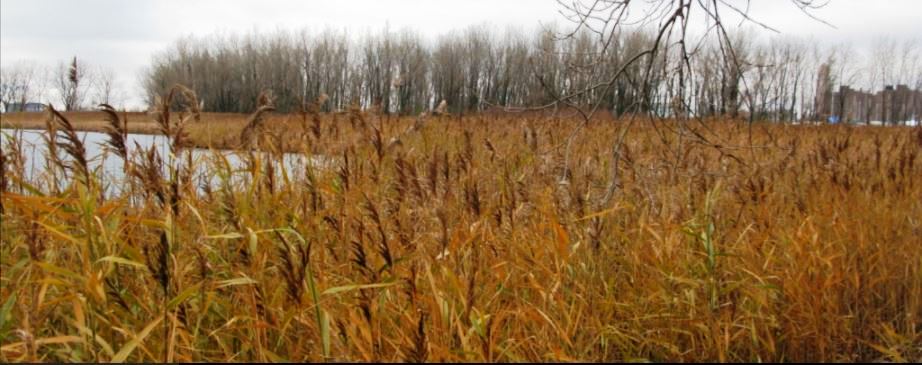To residents of Buffalo, New York, Times Beach is the beautiful, forested location you see when driving along the Route 5, Buffalo Skyway, along Furhman Blvd. Times Beach is a jewel within the globally significant and internationally recognized important bird area of the Niagara River Greenway corridor.
Over the years, native species became overrun by a number of invasive species on the site, including phragmites, Japanese knotweed, mug wort, and common buckthorn. In some areas, these are the only species growing, and grow so tightly and closely together, they have crowded out native species that provide food, nesting areas, and cover. There are still an amazing number of bird species located here (237 since 1976), but restorative management of the area will provide better habitat, and sustain and grow birding activities for the future.
As part of the Great Lakes Restoration Initiative, Times Beach Aquatic Invasive Species Removal Project is a recently-completed demonstration project which used proven techniques from around the country to control the invasive species located on the Times Beach site. A combination of mechanical, chemical, and biologic controls was used over a five year period to manage and control invasive species at Times Beach. The project will demonstrate the efficacy of these methods, and serve as a guide for similar projects around the Great Lakes.
Located near Buffalo’s Outer Harbor, Times Beach lies at the confluence of the Niagara River, the Buffalo River, and Lake Erie. This location makes Times Beach a focal point for migrating birds and pollinators seeking food, shelter, and breeding grounds.
The site contains a wide range of habitat types, allowing many different species to stop there along their journey. There is a pond that hosts waterfowl and herons, and seasonal mudflats attract migratory shorebirds. There are also upland meadows and forests that provides additional resources and canopy habitat.
As its surrounding area industrialized, Times Beach was subject to heavy pollution. Making matters worse, the U.S. Army Corps of Engineers began dumping dredged materials at Times Beach in the mid-1960s. This added tons of pollutants, such as PCBs and heavy metals, to the ecosystem.
Dumping foreign materials also facilitated the spread of invasive plants throughout Times Beach, including phragmites, Japanese knotweed, mugwort, and buckthorn. These invasives displaced the native plants that birds and wildlife rely on for food and habitat, causing a significant decline in species diversity throughout Times Beach.
Thanks to that grant from the Great Lakes Restoration Initiative, a coalition of local governments, citizens groups, and the Army Corps of Engineers has successfully removes invasive plants from Times Beach and has restored its natural ecology.
This project began in 2012, and the final native plantings were conducted in the fall of 2016.
Photo of invasive phragmites courtesy of USACE.

